Well, I made it to London but my suitcase did not. Between trips to Uniqlo to buy pajamas and underwear, I did manage to make my Order an Object appointment at the V&A East Storehouse.
I’ve written about the Storehouse before, but when I was here a couple of months ago I didn’t book my appointment in time, so my objects have been sitting in my cart waiting for the next opportunity. The size of the collection is SO overwhelming that when you sit down to try and pick five things to see up close, it’s impossible to work out where to even start. My friend Carl gave me invaluable advice, saying you need to pick a theme for yourself and then choose your objects to fit the theme, so naturally I chose fandom.
First up, this is a souvenir brooch that was made for the play The Blue Bird, which opened at the Theatre Royal, Haymarket in December 1909, and was apparently a smash hit.

This led me down a bit of a rabbithole, as always, and it’s possible to see the original set designs for the play online as well.

Anyway the brooch was tiny and gorgeous and you know what it reminded me of? This lovely pin I have from Jen Bartel:
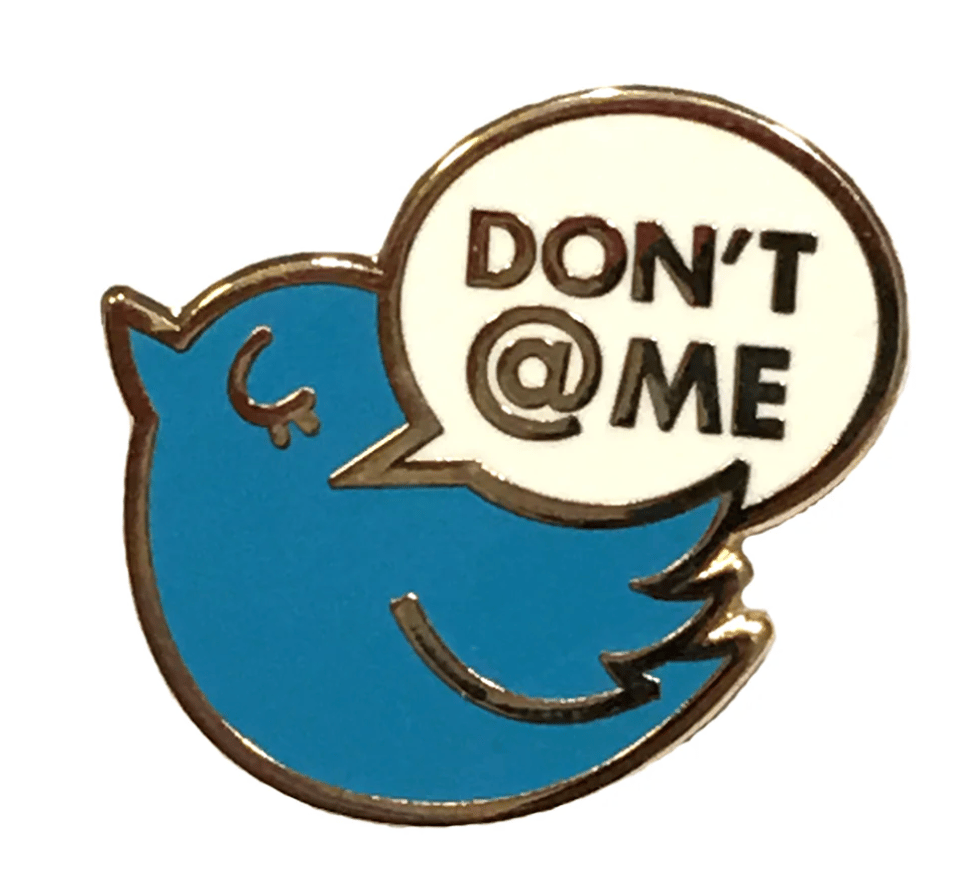
Next, this silk handkerchief printed for the premiere of Gone with the Wind in 1939.

I immediately learned two cool facts. When adjusted for inflation, Gone with the Wind is the most successful film in history. And actress Vivien Leigh made history by becoming the first British woman to win the Oscar for Best Actress. Apparently “this handkerchief, embroidered with characters from the film, was skilfully manufactured to tie-in to the films ‘weepie’ narrative.” Picture a cinema full of sniffling ladies, I guess?
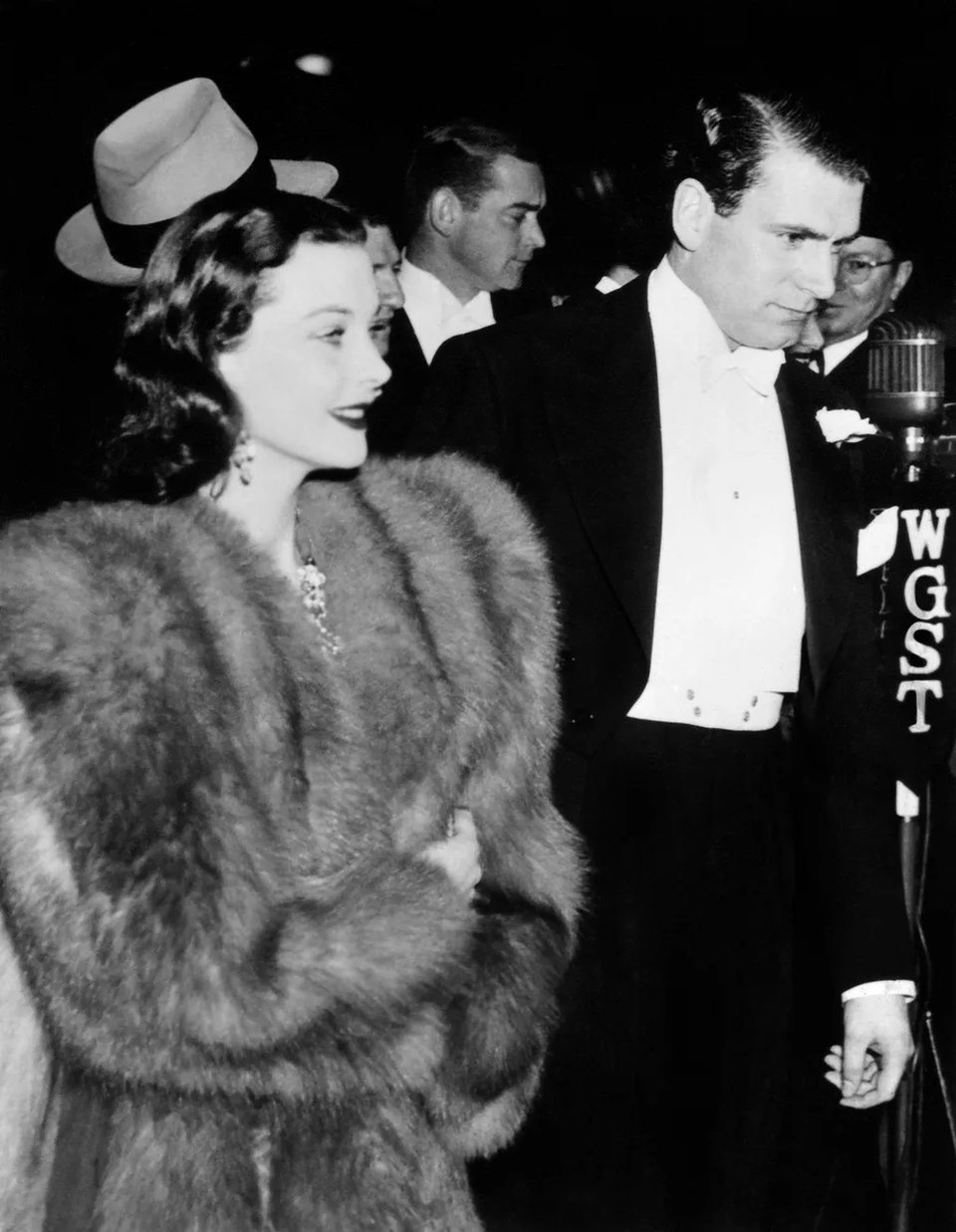
Anyway this led me to discover that Vivien Leigh was dating Lawrence Olivier at the time and they were both nominated for Oscars in the same year, so I wound up at this listicle of other couples for whom that is true. See if you can guess who before clicking.
Fast-forward to 1964, and this is the dress the usherette's wore for the premiere of The Beatles’ film A Hard Day's Night, at London Pavilion.
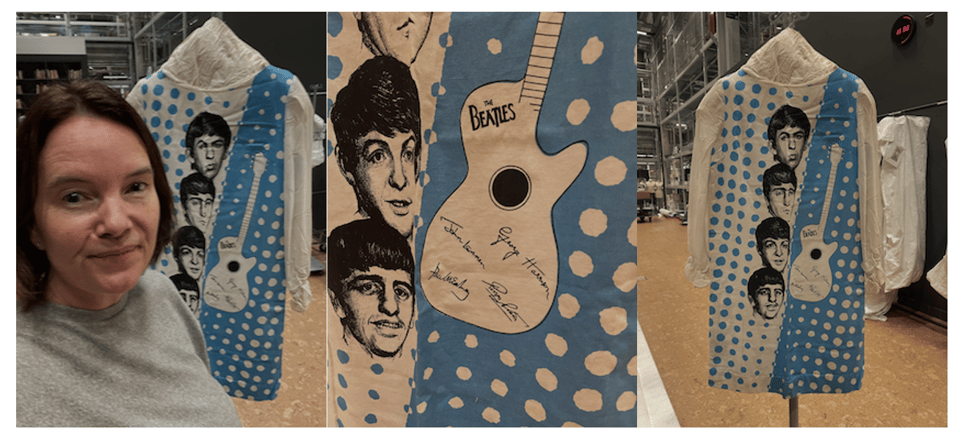
Honestly this party looks wild.
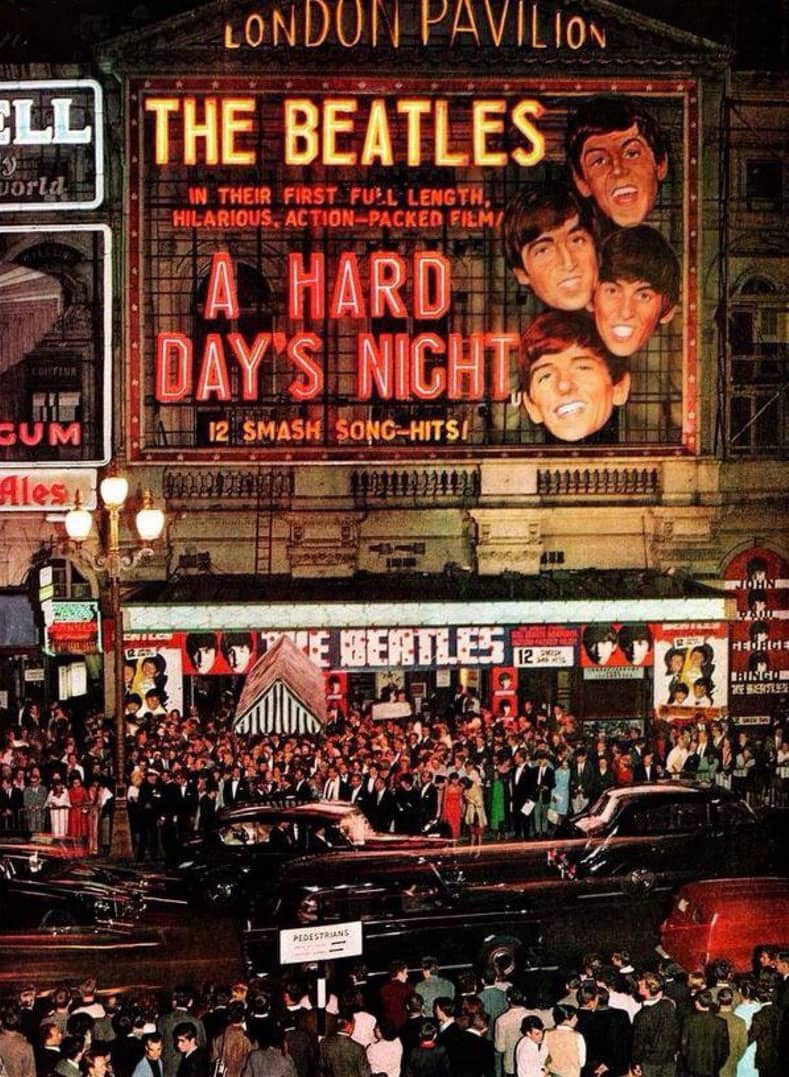
According to this fan blog:
For the London premiere, 12 girls in their late teens/early 20's were chosen … where they wore the dresses that were either blue or pink. There appears to be 3 different styles. After the movie, they all were allowed to go back to the Dorchester and attend the party with the Beatles. Many of the girls got their dresses signed by the four Beatles (see photo). These dresses were sold at department stores and through catalogs later in 1964.
This sounds sketch, but I’m going to assume it was wholesome.
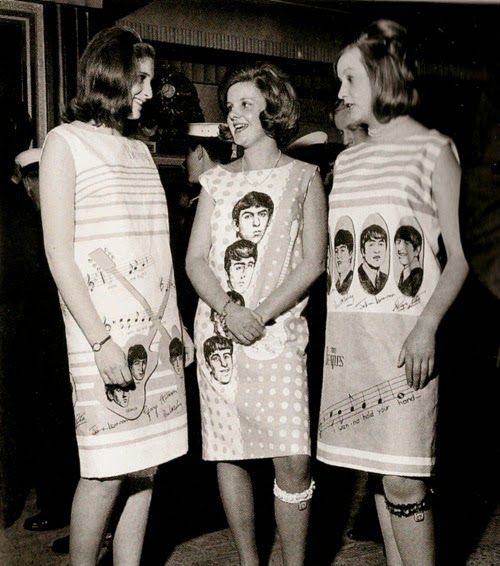
Number four was this rosette for the band Slade, a British glam rock band from the ‘70s who you think you haven’t heard of but you absolutely have because they’re responsible for the UK’s favourite Christmas song.

What I loved about this was the history of the form:
This example of rock and pop merchandise takes the form of a ribbon rosette, which was a popular form of expressing your admiration for a particular pop star or band in the early to mid 1970s. This fashion came from the football terraces where rosettes would be sold in your football team's colours; it lasted until punk fashion of the late 1970s replaced the ribbon rosette with much smaller button badges.
It’s hard to imagine football fans on the terraces sporting a jaunty rosette, but they absolutely did. Here are some vintage examples.

Anyway, I love that punk was responsible for these being evolved into badges. At my birthday party last week we had a badgemaker and it ruled.
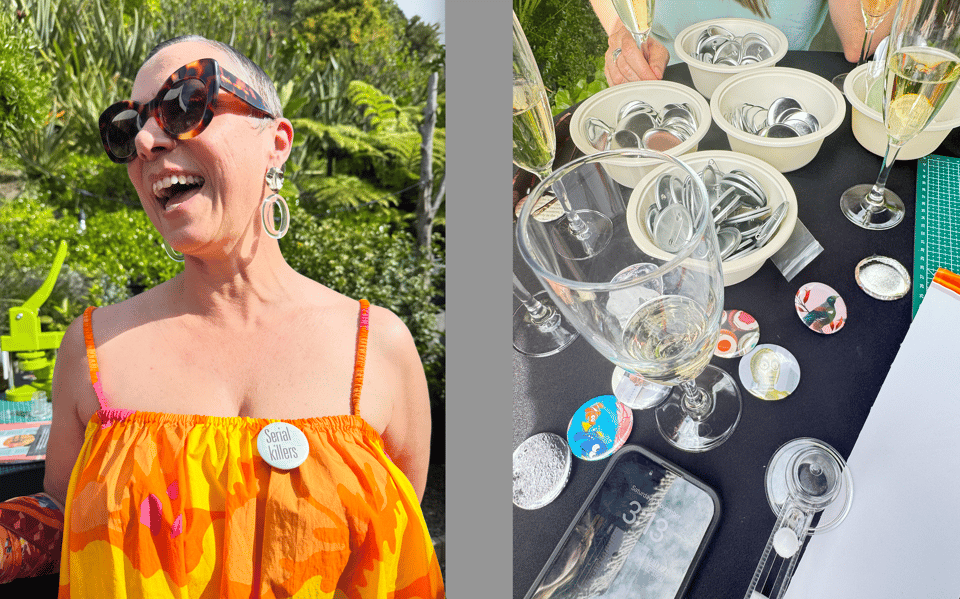
My last object was this polo shirt for the release of David Bowie’s album Lodger in 1979.
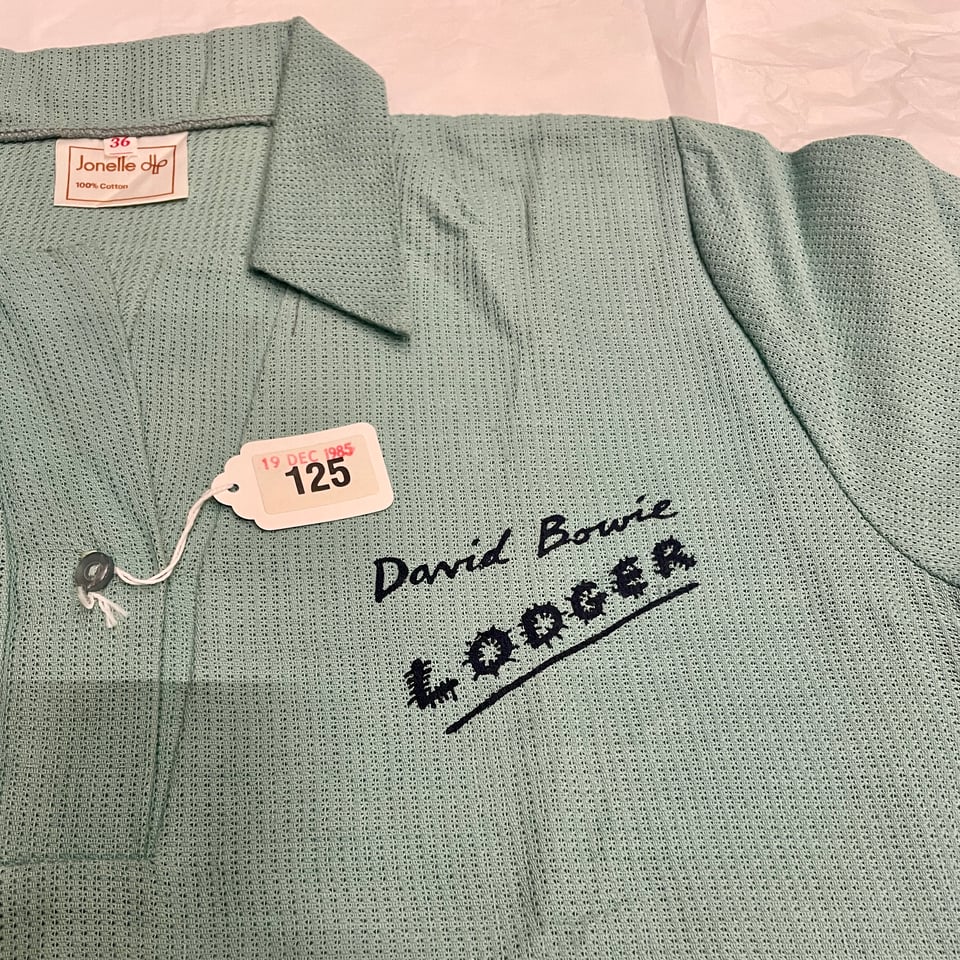
This Pitchfork review describes the album:
The title alone reduces his myth to something banal and transactional: No longer the Lonely Starchild gracing us with his unusual point of view, we instead meet Safari Bowie, half-drunk tourist working out his masculinity issues by haggling with street vendors, Bowie the houseguest who can't stop talking about getting "authentic" tacos. The first half of Lodger especially, with its cartoon jungles and mysterious Bedouins and Englishmen too dumb to stay out of trouble but too powerful to ever really be in it, belongs more to the colonial satire of Evelyn Waugh than late-'70s art rock. (Bowie said that "African Night Flight" in particular was inspired by a trip to Kenya where he met a bunch of old German pilots who seemed to spend most of their time getting drunk and the rest doing profitable crime in the bush.) Lodgers aren't heavenly beings; they're people with enough money to rent a room.
Somehow a standard sage green polo shirt seems appropriate.
Anyway, spending time with these objects, made to commemorate fannish moments spanning over a century, was really special. The V&A are doing something amazing with this access to their collection, entirely free, and you should take advantage of it whenever you’re nearby.
I arrived in London with basically no belongings — just a toothbrush, my laptop, and a growing collection of Uniqlo receipts — and then spent an afternoon holding other people’s treasured stuff. It was such a nice reminder that fandom has always been about making feelings tangible. All of these things are little proof points that you were there, that you cared, that this story or song or team or guy with weird hair meant something to you. The fact that the V&A will not only keep these things safe, but also let you sit with them for a while, feels like such a lovely act of respect for that devotion. If you do book a visit, I’d love to know what five objects you pick, and what tiny, trail they map through your own history.
I’m heading to Brighton today and maybe my suitcase is too? FFconf I’ll see you soon.
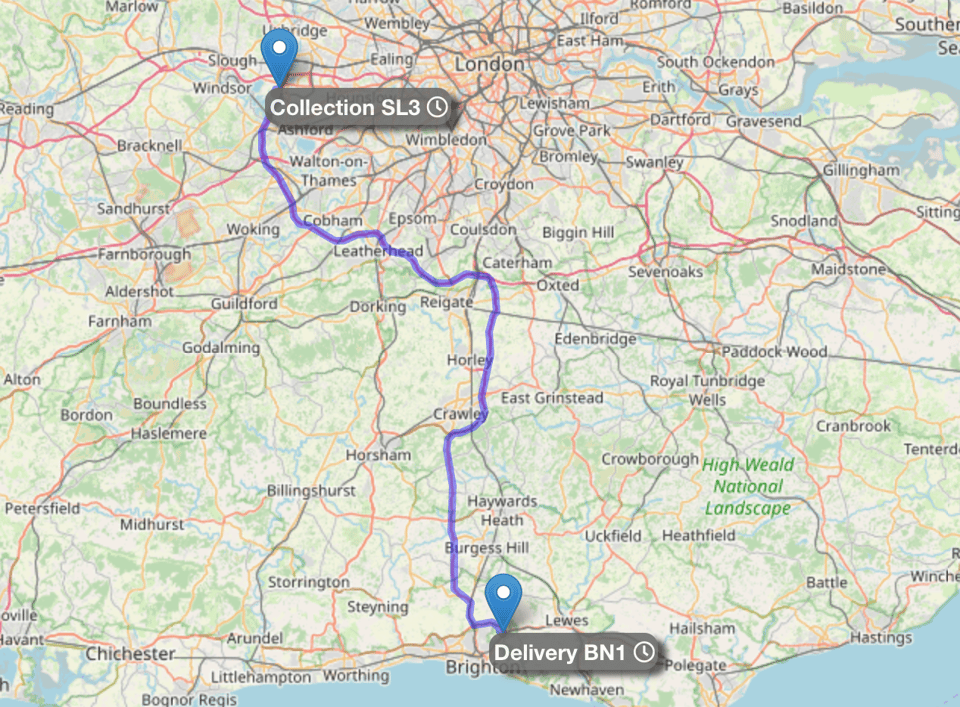
I love everything about this — Doctype is a magazine that you BUY and it has ten web apps in it that you TYPE INTO YOUR COMPUTER like we used to in the old days of BASIC.

Dmytri Kleiner attended my talk in Berlin last week and was inspired to make public.monster as a place to host whatever weird and wonderful stuff you feel like making. So you have no excuse now, go create something.
An absolute must-read, this gorgeous piece on how music is helping indigenous young people: Heavy metal is healing teens on the Blackfeet Nation
But Speicher wasn’t just there to nerd out. He shifted seamlessly into an overview of heavy music’s therapeutic benefits: catharsis, community and coping skills. “Heavy music teaches us things such as we’re not alone; when life is dark, we do something about it. We’re not just a prisoner to that darkness. But also that our risk fluctuates, that our misery isn’t gonna last forever. There are ways through it.” Students doodled in notebooks, idly plucked at an unplugged bass guitar, or held hands under the table.

Forward this email to someone who needs a badge.